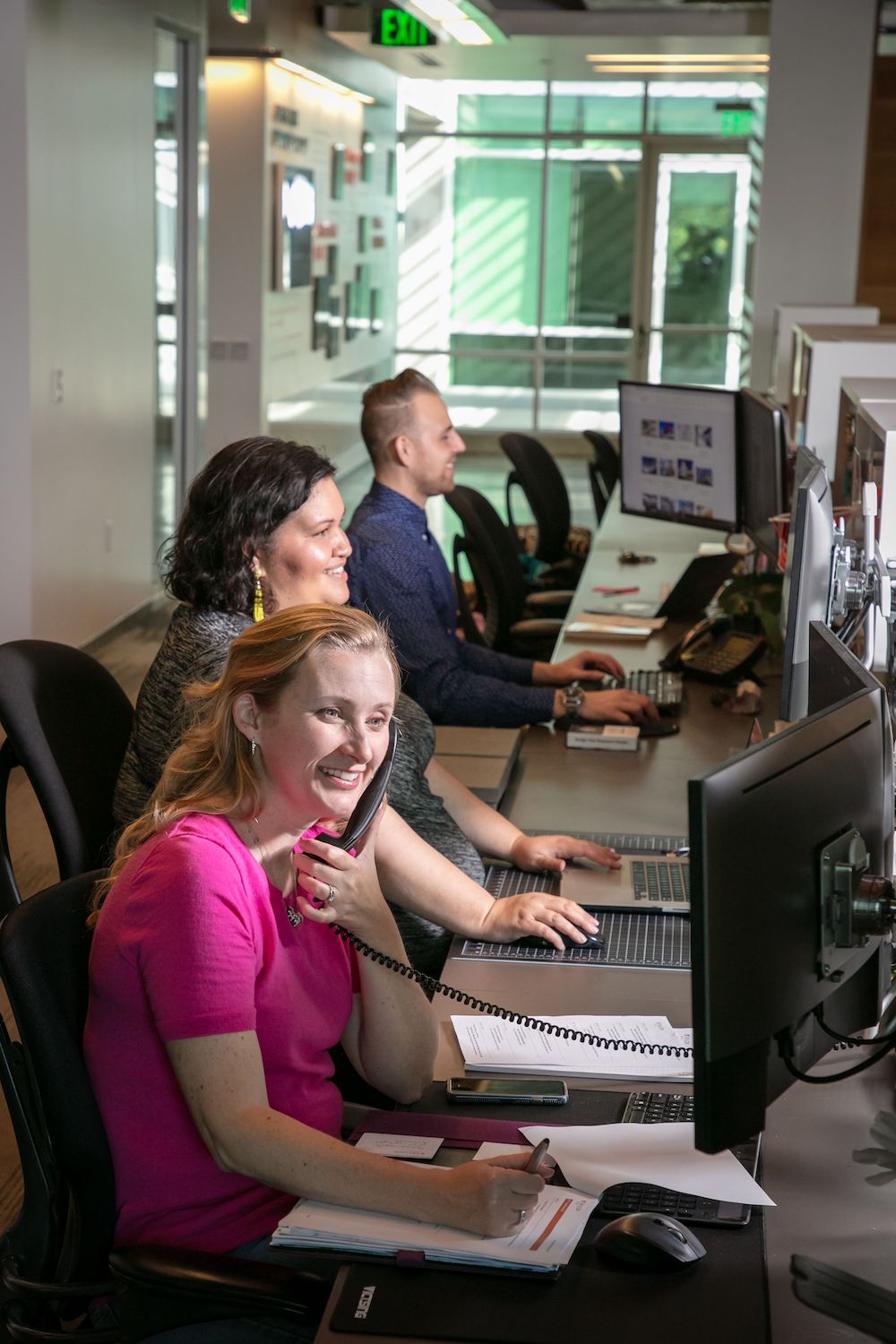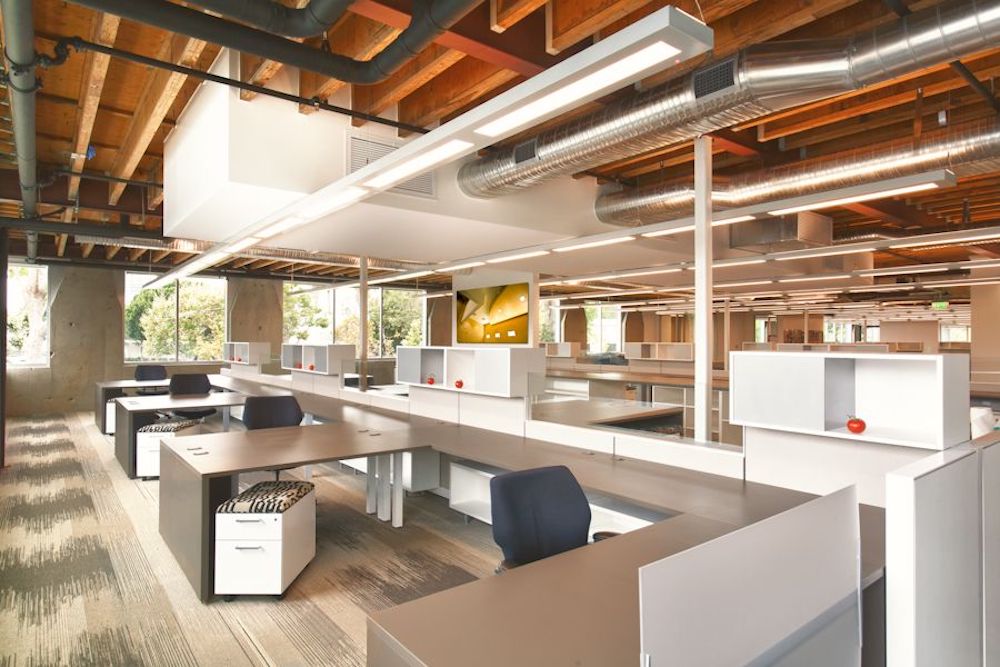Stephanie L’Estrange of Taylor Design asks: do our workspace environments inspire our employees to not “just work,” but to do their very best work?

Throughout history, organizations have provided physical space for their employees to work. Just. Work. There are examples dating back to ancient Rome of public buildings being used by workers as a shared space. The modern work schedule began to form in the late 19th Century and the concept of office cubicles was created in 1967.
In 2021, the physical office has fallen under renewed scrutiny as it seeks to accommodate changing workplace practices in a post-pandemic economy. Theories about workplace evolution are the subject of everything from articles in trade publications, to white papers, to TED Talks. Never has the intersection of office space and function been so connected to the very real competition for talent.

Acknowledging the new workplace paradigm with nuts-and-bolts improvements is wise and necessary, but the post-pandemic office also offers an opportunity that many designers and corporate real estate professionals may overlook – inspiration. This is a perfect time to question whether our workspace environments inspire our employees to not “just work,” but to do their very best work.

Stress the people, not the property
The pandemic has shown that people can work efficiently from home, underscoring that the office is another tool, like a chair, computer or phone. With many employers offering their people greater choice in how and where they work, designers can widen the discussion and ask what an employee actually needs at their disposal to do their best work. If the office is a tool, how should it differ from what is available at home?
The hybrid model should also end the long-held concept of the dedicated workstation. In the past, employees demanded an assigned desk in addition to all the collaborative and social spaces in the office. The desk became property, a home where the employee could “nest” and personalize. Yet, most employees spend only a small portion of their time at their assigned desk.
Post-pandemic office design offers the chance to redefine the desk as another tool to increase employee efficiency. By eliminating the concept of the workstation as property, a company encourages employees to consider more deeply what they’re doing with their hours in the office. Without the “safe space” of their desk, they must plan their day better, communicate more frequently and clearly with colleagues, and be more accountable for their time. The result is higher productivity and greater efficiency.

Segment by noise level
A surprising amount of interoffice angst can be avoided by simply organizing office activities based on noise level. In a thoughtful arrangement, spaces closest to the main entrance would accommodate louder activities (e.g., vendor meetings) and those deeper into the space would host quieter, more focused work. In the post-pandemic office, people escaping the solitude of their home office may welcome a place to interact and collaborate in a social setting. It will be equally therapeutic for those seeking the respite of a quieter place as an escape from a noisy home environment.
It is incumbent on companies across all industries to recognize that some employees need quiet space and must rely on an office space to provide it. Others need to collaborate, requiring a space that can accommodate groups and moderate noise levels. Employees also need to socialize, and this necessitates a space that can allow higher levels of noise. All these spaces must be sacred. By allocating space based on the noise level required to perform the appointed task, a company can create an office that is a more efficient tool for everyone equally.

Incorporate nature
Not all employees need a computer’s glow on their face to formulate ideas or to create. Views to nature or meeting outside while walking can naturally rebuild energy lost while sitting all day. Offer access to nature through interior landscaping, fresh air and exterior views. Provide indoor-outdoor access and spaces to work if your climate allows. Notice your office surroundings; is there a walkable community or hiking/biking trails within easy access?
All these elements can provide a desirable alternative to the home, while helping to accentuate and preserve your culture, and enhance learning and mentoring opportunities within the space.

Question office design trends
Offices tend to feel the same because they are designed using the same set of expectations and are often influenced by current trends. This is not only true of the cubicle farms that became the default “design” for companies that stayed in the safe lane in the 80s and 90s, but also for the trendy, open-office concepts popularized by tech companies in the past 20 years. Although they feature outwardly appealing elements such as high ceilings, abundant sunlight and open areas, these spaces became a series of cliches. Foosball tables and pinball machines became surrogates for the kind of thoughtful additions to the work environment that truly make a company a fun and rewarding place to work.
Rather than cubicles or a foosball table dictating firm culture, a workplace should reflect its surroundings, empower employees, and support the function of the space. A good-looking space is not always a great place to create or work. With employees now better positioned to choose their work location and schedule, they will select the environment that best meets their needs on any given day. Harnessing the office to be an important component of this choice is vital to developing and reinforcing your culture; its design should be considered with care.

Get leaders on board
While employees need the most accommodating environment and the correct tools to do their best work, leaders need to ask the right questions. They must assess what drives their highest productivity in the context of the business and consider what makes the company unique. Only then can they create a workplace that supports their company culture, not one that simply falls in line with the latest trend or conventional wisdom.
The workplace is changing, and the revolution that COVID has wrought on the business community needs to be reflected in our office design. Corporate leaders must collaborate with their design experts to better understand how to integrate a hybrid workforce into the fabric of the physical office layout. In this way, companies can offer their employees a functional office setting that inspires, and that provides an environment where they can do their very best work.



Thank you for giving me information about Functional Post-Pandemic Office. This will be a great start for elegant looking office spaces.